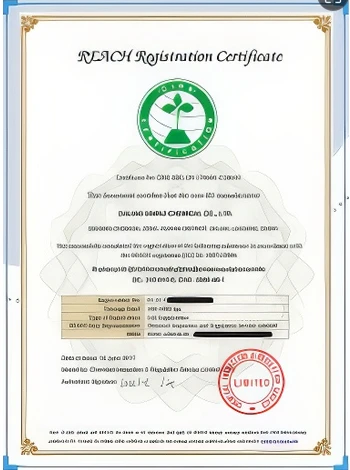



Optimizing the Process for Sodium Sulfide Production in Industrial Applications
The Production of Sodium Sulfide Methods and Applications
Sodium sulfide (Na2S) is an important inorganic compound widely used in various industrial applications, including textiles, paper manufacturing, and water treatment. It is particularly notable for its role in the production of other chemicals, as a reducing agent, and in processes such as mining and leather production. The methods of sodium sulfide production can vary, but they typically revolve around the reaction of sodium hydroxide (NaOH) or sodium carbonate (Na2CO3) with sulfur or hydrogen sulfide (H2S).
One common method of producing sodium sulfide is through the direct reaction of sodium hydroxide with sulfur. In a typical process, the sodium hydroxide is mixed with molten sulfur, resulting in the formation of sodium sulfide and water. The balanced chemical equation for this reaction is
\[ 2 NaOH + S \rightarrow Na2S + H2O \]
This method is favorable as it can be conducted in a single step and allows for the production of high-purity sodium sulfide. However, it requires careful temperature control to avoid excessive side reactions and to ensure maximum yield.
Another significant method for the production of sodium sulfide involves the reaction between sodium carbonate and hydrogen sulfide. In this process, hydrogen sulfide gas is passed through a solution of sodium carbonate. The reaction produces sodium sulfide, sodium bisulfide, and water, as given by the following equation
sodium sulfide production

\[ Na2CO3 + H2S \rightarrow Na2S + NaHS + H2O \]
This method is advantageous as it utilizes hydrogen sulfide, a byproduct from various industrial processes, thus contributing to more sustainable production practices.
The application of sodium sulfide spans various industries. In the pulp and paper industry, it is used in the kraft process as a cooking chemical to break down lignin and separate cellulose fibers from wood. In textiles, sodium sulfide is employed in dyeing processes as a reducing agent, allowing for the production of vibrant colors. Moreover, in the mining industry, it is used for the flotation process to separate minerals from ores, enhancing the recovery rates of valuable metals.
In the field of waste management and environmental protection, sodium sulfide plays a crucial role in wastewater treatment. It is capable of precipitating heavy metals, such as copper, lead, and cadmium, thereby facilitating their removal from contaminated waters. This application not only aids in the reduction of water pollution but also contributes to compliance with environmental regulations.
Despite its numerous applications, the handling of sodium sulfide requires caution. The compound is toxic and can release harmful gases, particularly hydrogen sulfide, upon reaction with acids. Therefore, safety protocols must be strictly followed during production, storage, and usage to mitigate any potential health risks.
In conclusion, sodium sulfide is a versatile compound with diverse applications in several industries. Its production, while straightforward through established chemical reactions, must be managed carefully to harness its benefits safely and sustainably. As industries continue to evolve, the demand for sodium sulfide and its environmentally-friendly production methods is likely to grow.
-
Using Potassium Nitrate for Colorants in Various ProductsNewsApr.29,2025
-
Safety Precautions When Handling Monopotassium PhosphateNewsApr.29,2025
-
Lead Oxide in Wastewater Treatment: A Powerful SolutionNewsApr.29,2025
-
Innovations in Sodium Chlorite ApplicationsNewsApr.29,2025
-
How Lead Nitrate is Used in Analytical ChemistryNewsApr.29,2025
-
Different Grades of Sodium Bisulfate: Which One Do You Need?NewsApr.29,2025
-
Sodium Chlorite vs. Other Disinfectants: A Comparative AnalysisNewsApr.14,2025










